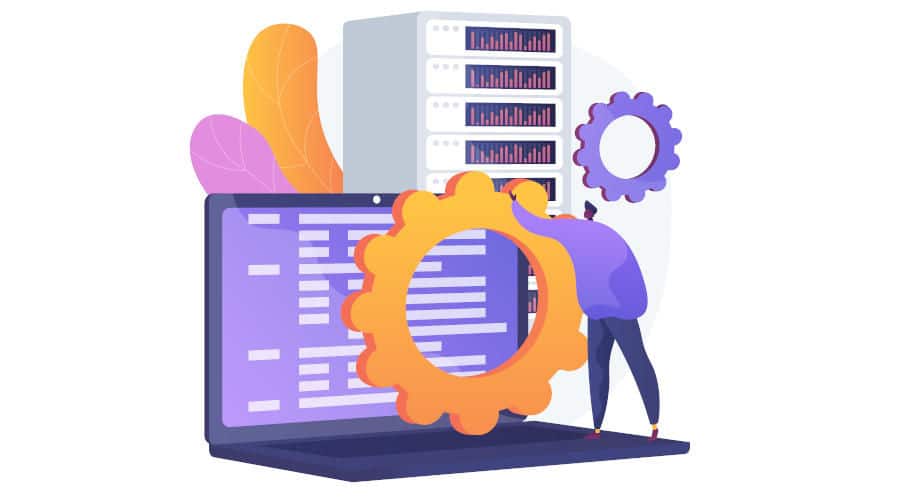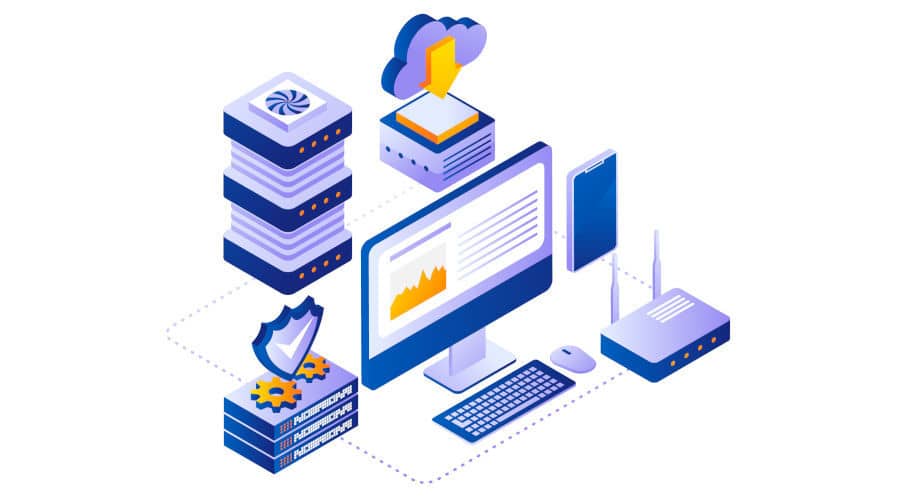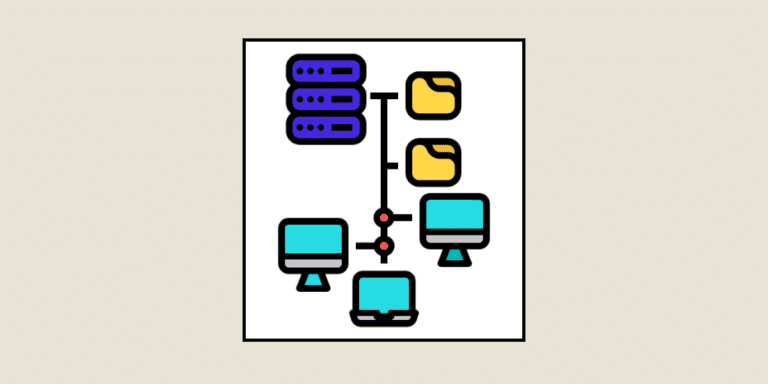To exploit available data, organizations need a high-performance IT infrastructure. This is the backbone of their information systems.
But what is it made of? What is it used for? And how can it be optimized? That’s what we’re going to find out in this article.
What is IT infrastructure?
IT infrastructure, the heart of the IT system
IT infrastructure refers to all the components essential to the smooth running and management of IT services.
Here are the main ones:
- Hardware: physical resources such as servers, datacenters, computers, routers, telephones, hubs, switches and other installations.
- Software: such as operating systems, ERP, CRM, HRIS, content management systems, business intelligence solutions, web hosts, collaborative solutions like Office 365 or Slack.
It is the foundation of the organization’s entire information system. Thanks to this IT architecture, all data can be interconnected. And in total security.
Other dimensions of IT infrastructure
In addition to the hardware and software components of the IT infrastructure, it’s important to consider its various dimensions.
Namely :
- The user: an organization’s IT architecture serves its employees first and foremost. They are the ones who use the computers, software and web servers on a daily basis… They can use them within the company itself, but also remotely (as part of a telecommuting or business assignment). In all cases, the IT infrastructure must guarantee access to company resources, whatever their geographical location.
- The network: this is what guarantees access to the Internet. Today, companies have access to a very high-speed network, enabling them to maximize their performance. And to reconcile performance and security, the IT infrastructure integrates other network components, such as anti-virus and firewalls.
- The cloud: today, more and more organizations combine local infrastructure with the cloud. This is a hybrid architecture in which companies back up their resources on on-site servers and in the cloud. This can be the private cloud (resources accessible only by employees) or the public cloud (accessible by all, even third parties). All these cloud resources are hosted outside the organization (such as backups or virtual machines).

What is the purpose of IT infrastructure?
In the 21st century, all businesses use technology to function. Whether it’s to communicate internally or externally, to optimize budgets, to pay employees, to send parcels, to identify the ideal customer…
The IT infrastructure enables them to use the resources needed for these different tasks (such as computers, CRM, databases or analytics tools… ).
Data processing
The primary objective of IT infrastructure is to facilitate data storage, use and sharing between all stakeholders.
For example, the data on a datalake can be used within a business intelligence tool to help data analysts gain insights, and thus support decision-making.
The IT architecture simplifies communication between all the company’s IT resources. In the age of digital transformation, companies more than ever need a high-performance infrastructure to maximize their competitive advantage.
Resource availability
Beyond data exploitation, it’s vital that the IT infrastructure offers maximum availability. Employees use hardware and software on a daily basis. If they’re not available, they can’t get on with their work.
The IT infrastructure must therefore be stable, reliable and efficient. Whatever the workload. Otherwise, slowness and service interruptions multiply. This in turn hampers the organization’s overall productivity.
Data security
While increasing volumes of data enable organizations to make more efficient, informed decisions, they also expose them to new risks: cybersecurity.
Indeed, hackers are taking advantage of the importance of data for businesses to expose their vulnerabilities. More and more cyber attacks are blocking access to data in exchange for ransom payments.
But ransomware can be prevented with a perfectly secure IT infrastructure. The idea is to protect hardware and software against all cyber risks.
And if, despite these protection efforts, the company should come under attack, it is essential to organize an action plan to ensure business continuity. In particular, multiple backups make companies less vulnerable to attack.
In this respect, IT infrastructure meets the dual objectives of performance and security. Here’s how to optimize it.

How to optimize your IT infrastructure?
Getting started
Before optimizing your IT infrastructure, it’s essential to start by analyzing your existing architecture. The idea is to answer the following questions:
- What are the organization’s resources?
- Are they easily accessible?
- What is the availability rate?
- What are the cyber risks?
- What measures have been put in place?
This assessment is then used to identify areas for improvement and priority issues.
Choosing the best IT infrastructure model
Traditionally, all IT infrastructure components (datacenters, data storage systems, etc.) belonged to the company. But this “classic” solution requires a lot of equipment, which needs to be supplied and hosted. This represents a significant cost.
That’s why more and more organizations are turning to cloud computing. The infrastructure is provided by a cloud provider who takes care of backup and storage. Above all, this infrastructure is secure and scalable to meet the organization’s needs.
Good to know: most organizations opt for a hybrid cloud infrastructure.
Implement optimization actions
To guarantee the performance and security of your IT infrastructure, there are a number of actions you can take, such as :
- Combining firewalls and high-performance antivirus software with a VPN (Virtual Private Network) to reinforce Internet connection security;
- Regular security audits with vulnerability alerts, intrusion detection, etc;
- Backup the IT infrastructure on an external server;
- Carry out regular preventive maintenance;
- Define a disaster recovery plan;
- Etc.
If you’d like to find out more about optimizing your IT infrastructure, join our training courses.

Things to remember :
- The IT infrastructure is the backbone of an organization’s information system.
- And with good reason: it groups together all the hardware and software required for its operation.
- But to optimize the use of company resources, IT architecture must be high-performance, both in terms of availability and security.










